Some months ago, I found a very interesting piece at BoingBoing, about this type of Sardinian cheese full of worms. It was particularly notable to me that it was described as illegal food.
Is there illegal food? Yes, there is. Rhinoceros parts for witchcraft
recipes should be illegal, in my opinion, but other things have been
outlawed in the name of public health, regulations of agro products
and markets, and that's just a pity, if not an
injustice and a loss for human culture.
Among food that can be labeled illegal nowadays is the dessert of my childhood. A marvelous natural meal that we used to have every spring, gatzatua. It's some sort of yoghourt common to several peoples in the Iberian peninsula. We Basques call it gatzatua or mamia. In Spanish it's cuajada and the term seems to have no English counterpart although, from what I see in the Wikipedia, it could enter into the Curd category.
The thing is that nowadays you cannot prepare natural gatzatua at home. And that's because this thing held in the boy’s hand is illegal. That's ligarra, rennet in English according to Wikipedia. And you cannot buy that anymore. When I was a child, butchers and farmers freely sold it, and we used to have a ligarra in the kitchen throughout the spring. Not anymore. Finally, after several years without seeing one, I got one on the black market. And we could make natural gatzatua. Here's the description of the illegal offence.
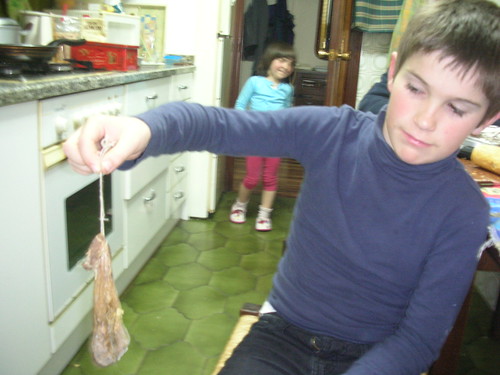
Ligarra is the desiccated stomach of
a little lamb, sacrificed in its 2nd or 3rd week of life, when it only
has been fed mother's milk. More precisely, ligarra/rennet is the content
of that stomach, a mixture of fermenting enzymes and bacterial fauna.
Ligarra has been made illegal because the treatment of certain viscera is now exclusive to official slaughterhouses, and from there, these parts are not given back to farmers or to butcher shops, but are processed by the food industry. Some companies, then, sell something they call Cuajada as if it were Yoghourt, but the product has nothing to do with the real thing.
So, this time, since we got a real and illegal ligarra, we prepared gatzatua. This way:
Put some hot water in a cup. Cut open the rennet without fear, and take some bits to dissolve them in the cup. It doesn't naturally dissolve, you just press it a little bit.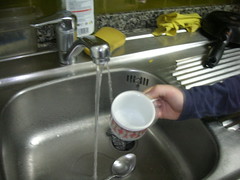
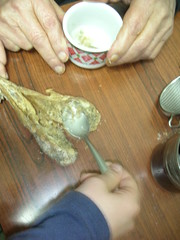
Now you take another cup, and you pour the product through a strainer, so hard bits and hair (remember this is the real contents of a sacrificed lamb's stomach) don’t go through.

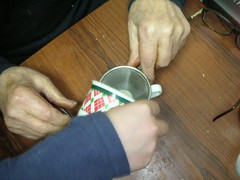
The second ingredient is sheep milk. This, also, cannot be bought nowadays directly from farmers or shepherds, but somehow it's easier to get it indirectly in the Basque Country. Besides, there is processed dairy sheep milk. Last week, we made gatzatua with milk of both types, illegal and legal. The one for the children's trial and these photos is bottled (of the Ultzama brand), thus legal.
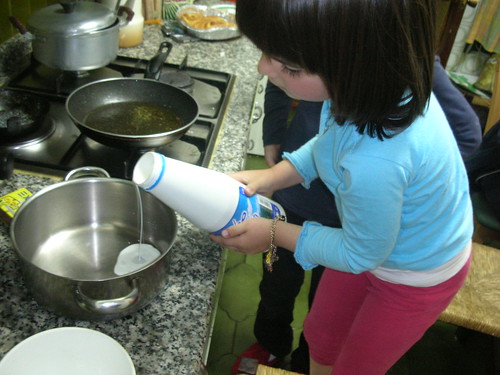
So, heat the milk, putting a piece of cinnamon on it. If it's natural/illegal, boil it, then wait until it cools body temperature. For bottled sheep milk, just heat until that level, don't boil it.
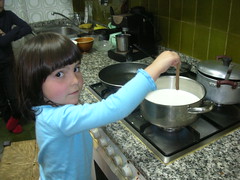

When we have warm milk at the ideal temperature, put it in the dessert cups. For each cup, add a little spoon of liquid ligarra/rennet. Stir it just a little, then leave it alone.
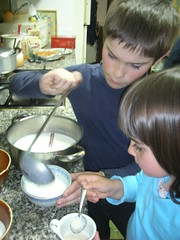
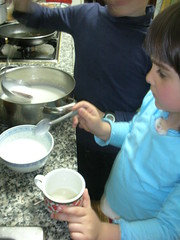
Don't move the cups for two hours. Then it's done. The milk solidifies, you turn the cup vertically and it holds. That's gatzatua ready to be eaten.

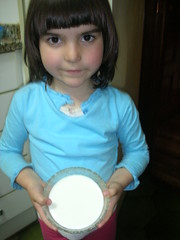
It can be consumed immediately, but putting it in the fridge for a little bit is good, as cold it's ideal. The product will last for 3 days in the fridge nicely, as well. The way to eat it is by pouring sugar or honey over it, and just eat it with the spoon, but, remember, never stir it: this is not yoghourt. If the initial sweetness gets eaten up, put more sugar on and keep on eating.
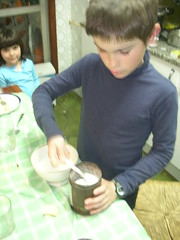

There it is. Nice and sweet gatzatua.
Maybe the sight of a sacrificed lamb's stomach full of bacteria is shocking to you, but the final product is far from being anything close to those Sardinian cheese worms or illegal foods out there that tend to be shocking by nature, it seems. Gatzatua is a very gentle dairy product, a soft dessert for everybody, some kind of yoghourt that will remind you mildly of cheese, perhaps.
Preparation is also just 10 minutes for a 10 year old boy, as you can see (plus the 2-hour wait). That's natural fast food, not a complicated gastronomical oddity. It's just the regulations that make it hard, having outlawed natural rennet and sheep milk.
It's a shame that natural gatzatua is illegal.
Btw, my pics for the process are CC-BY-SA.






